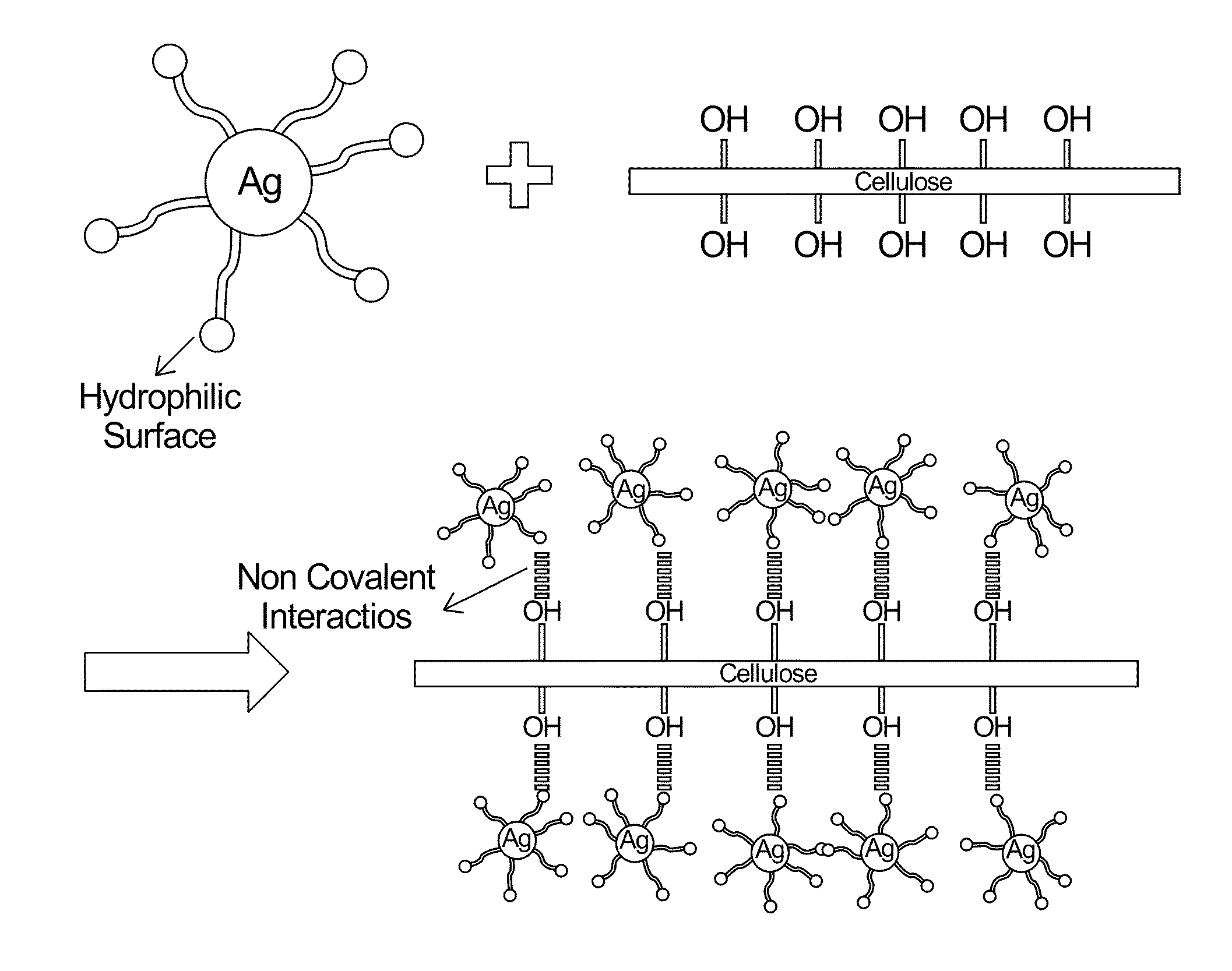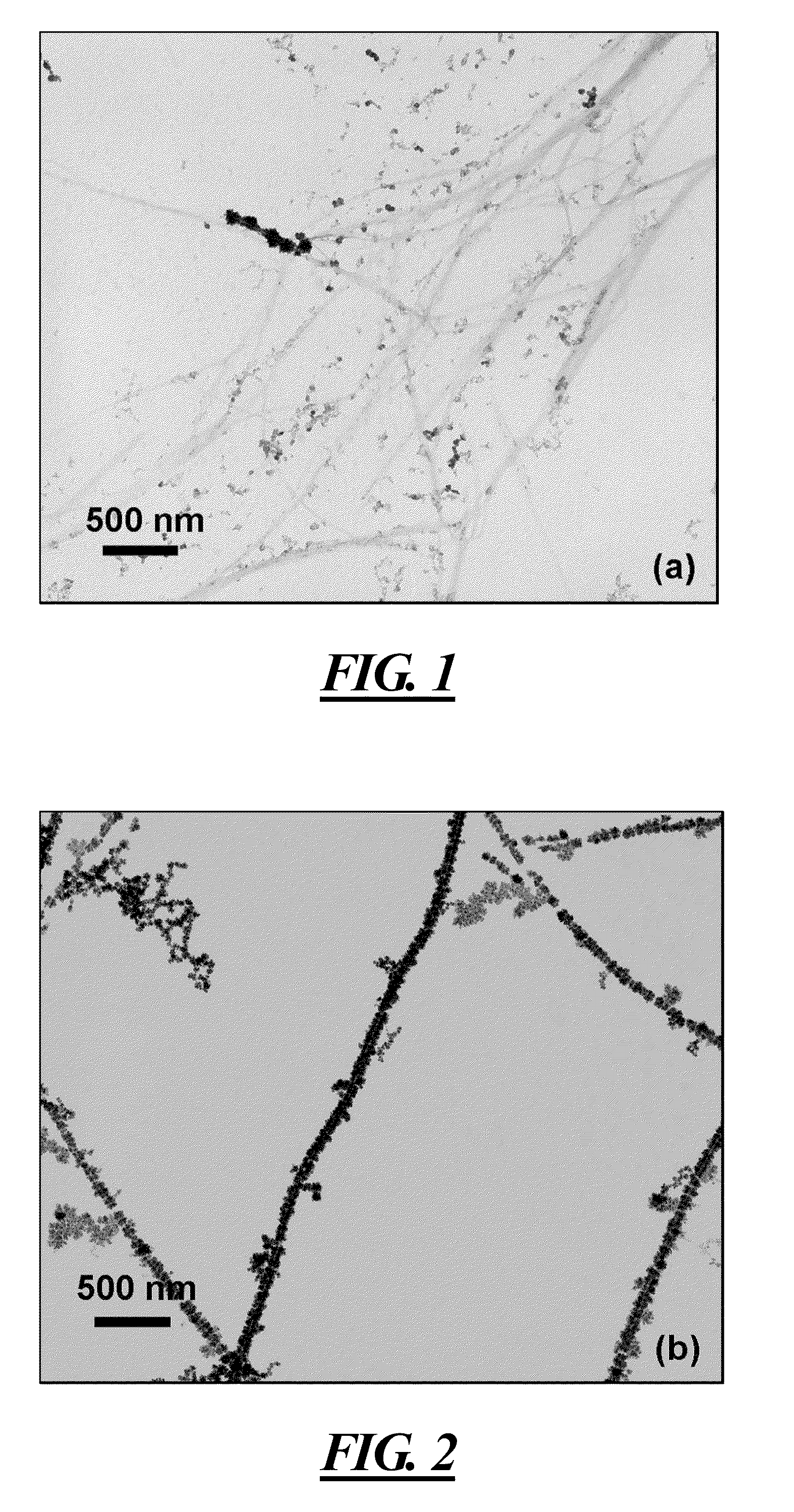Surfactant-Assisted Inorganic Nanoparticle Deposition on a Cellulose Nanocrystals
a technology of cellulose nanocrystals and inorganic nanoparticles, which is applied in the direction of material nanotechnology, liquid/solution decomposition chemical coating, coating, etc., can solve the problems of limiting the attractiveness of biomolecules for their use in the fabrication of 1d nanostructures, limiting the application prospects of cncs as biotemplates for the production of metallic and semiconductor nanomaterials, and the inability to realize the exploitation of cn
- Summary
- Abstract
- Description
- Claims
- Application Information
AI Technical Summary
Benefits of technology
Problems solved by technology
Method used
Image
Examples
Embodiment Construction
Tunicate Cellulose Nanocrystal Extraction
[0049]CNCs were synthesized via acid hydrolysis (sulfuric acid) from tunicates according to a method reported in literature. Briefly, tunicates (Styela Clava) were heated at 80° C. for 24 h in an aqueous solution of potassium hydroxide (3 L, 5% w / w per 500 g of tunicate walls) and agitated mechanically. Two more cycles of heating at 80° C. for 24 h, in a same concentration as previous solution of KOH were performed. The raw cellulose was washed with water at neutral pH, followed by treatment cycles with 5 ml acetic acid and 10 ml of hypochlorite solution. Next, the suspension was heated at 60° C. The acetic acid and hypochlorite treatments were repeated at 1 h intervals until a white color of the cellulose was registered. In the final step, the cellulose was washed with water and transformed into a pulp with a Warring blender. Sulfuric acid hydrolysis of cellulose pulp was performed to obtain sulfate-functionalized tunicate CNCs, which provid...
PUM
| Property | Measurement | Unit |
|---|---|---|
| Molar density | aaaaa | aaaaa |
| Molar density | aaaaa | aaaaa |
| Molar density | aaaaa | aaaaa |
Abstract
Description
Claims
Application Information
 Login to View More
Login to View More - R&D
- Intellectual Property
- Life Sciences
- Materials
- Tech Scout
- Unparalleled Data Quality
- Higher Quality Content
- 60% Fewer Hallucinations
Browse by: Latest US Patents, China's latest patents, Technical Efficacy Thesaurus, Application Domain, Technology Topic, Popular Technical Reports.
© 2025 PatSnap. All rights reserved.Legal|Privacy policy|Modern Slavery Act Transparency Statement|Sitemap|About US| Contact US: help@patsnap.com



